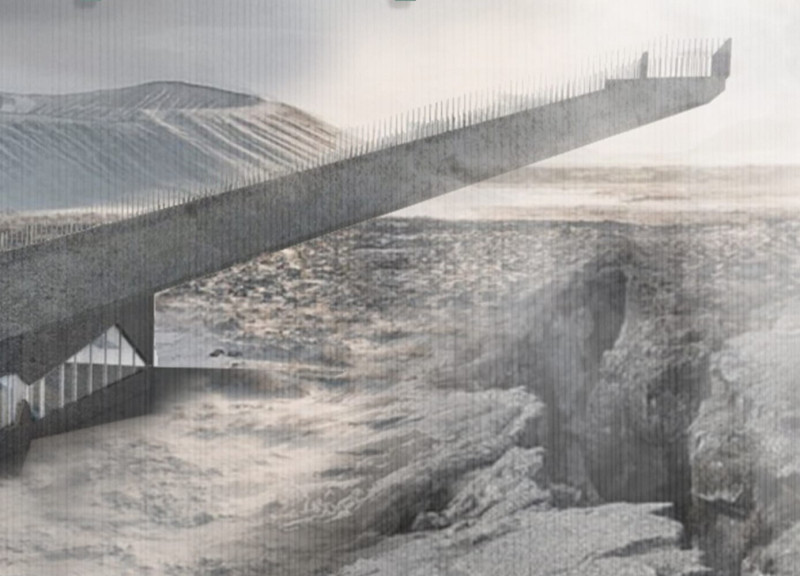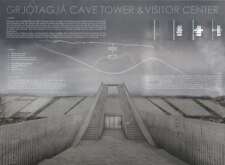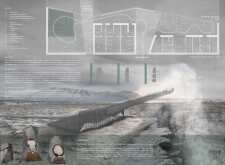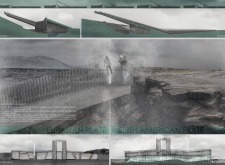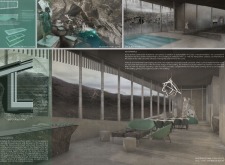5 key facts about this project
The Grjótagjá Cave Tower & Visitor Center is located at the tectonic fault line between the European and North-American plates in Iceland, an area noted for its fascinating geology. Serving as both a visitor center and a spa, the building aims to connect visitors with the natural surroundings. The design emphasizes the idea of duality, exploring the relationship between the movements of the earth and the complexities of human thought and experience.
Design Concept
The concept highlights the theme of duality by relating the separation of the tectonic plates to the layers of the human psyche. The architecture acts as a threshold, inviting exploration between the natural and mythical realms. The cave entrance signifies this transition, allowing visitors to engage with both the tangible and the imaginative, with the Homunculus serving as a metaphor for hidden aspects of the human experience.
Site Configuration
The site is strategically positioned between public and private caves, enhancing access to the nearby geothermal cave bath. The building’s form echoes the surrounding topography, resembling the inclined rocky plates of the area. The finish floor is set lower than the surrounding ground, helping it blend into the landscape. One side of the building features large windows that provide expansive views, connecting visitors to the natural beauty outside.
Spatial Organization
Inside, the layout reflects its dual purpose. The public area includes a multifunctional exhibition space that educates visitors about the geology and mythology of the surrounding landscape. This section contains necessary amenities, such as a reception area, a shop, and a café. In contrast, the private area is designed for relaxation, featuring a spa room with direct access to the cave bath, which encourages a peaceful retreat from the outside world.
Materials and Sustainability
The project plans to use low-carbon materials, specifically Icelandic stone wool for insulation, aligning with current sustainability practices. It incorporates geothermal heating, which uses natural hot water to enhance energy efficiency. This approach reduces the building's environmental impact while maintaining comfort, reflecting an awareness of sustainable practices in a region known for its geothermal activity.
Natural light plays a significant role in the design, filtering through the large windows to illuminate the interior spaces. This connection to the outside landscape allows the beauty of the geological formations to become part of the visitor experience, fostering a more profound appreciation of the site's unique characteristics.


